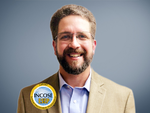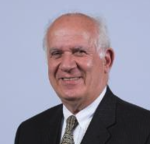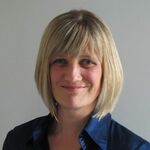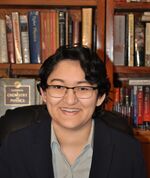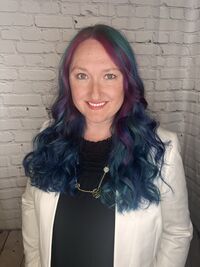Version 2.13
This version was released on 17 November 2025. The Editorial Board continues to incorporate updates to reflect v. 5 of the INCOSE Handbook and the 2023 version of ISO/IEC/IEEE 15288. In some instances, substantive rework was completed to reflect the current versions and changes will continue into the next releases of the SEBoK.
New articles are highlighted in the left-hand outline, in the SEBoK Table of Contents, and are elaborated below.
We welcome you to Get Involved with SEBoK via the content review form. Thank you for your engagement!
Part 2
- The Nature of Systems Knowledge Area is significantly expanded with eight new articles complementing the existing two renamed articles.
- New and renamed articles are: Engineered Systems (was "Types of Systems"), Natural Systems, Principles and Attributes of Natural Systems, Value Proposition for Systems Engineering, Identity and Togetherness of Systems, Behavior and Dynamics of Systems, Cycles and the Phases of Systems (was "Cycles and the Cyclic Nature of Systems"), Purpose and the Capability of Systems, Value and the Quality of Systems, and Consciousness and the Experience of Systems.
Part 3
- A new sub-part on Process Concepts has been added in two Knowledge Areas and 5 articles.
- Process Concepts Knowledge Area with new articles Process Description and Process Concurrency, Iteration, and Recursion.
- Process Selection and Tailoring Knowledge Area with new articles Guidelines for the Selection and Tailoring of Processes, Using ISO/IEC/IEEE 24748-2, and Tailoring.
- Updates have been made to the following articles in the Technical Management Processes Knowledge Area (renamed from "Systems Engineering Management").
- Project Planning (was "Technical Planning"), Project Assessment and Control (was "Assessment and Control"), Decision Management, Risk Management, Configuration Management, Information Management, and Measurement.
Governing Board for version 2.13
The three SEBoK steward organizations – the International Council on Systems Engineering (INCOSE), the Institute of Electrical and Electronics Engineers Systems Council (IEEE-SYSC), and Stevens Institute of Technology – provide the primary funding and resources needed to sustain and evolve the SEBoK and make it available as a free and open resource to all. The stewards appoint the BKCASE Governing Board to be their primary agents to oversee and guide the SEBoK. The stewards appoint the SEBoK Editor in Chief to manage the SEBoK and oversee the Editorial Board.
The BKCASE Governing Board includes:
- Representing the The International Council on Systems Engineering (INCOSE)
- Art Pyster (Governing Board Chair), Emma Sparks
- Representing the Systems Engineering Research Center (SERC)
- Thomas McDermott, Cihan Dagli
- Representing the IEEE Systems Council (IEEE-SYSC)
- Andy Chen (President of IEEE Systems Council), Steve Li (Treasurer of IEEE Systems Council)
Past governors include Stephanie White, Bob Rassa, Richard Fairley, Kevin Forsberg, Paul Frenz, Richard Hilliard, John Keppler, Bill Miller, David Newbern, Ken Nidiffer, Dave Olwell, Massood Towhidnejad, Jon Wade, David Walden, and Courtney Wright. The governors would especially like to acknowledge Andy Chen and Rich Hilliard, IEEE Computer Society, who were instrumental in helping the governors to work within the IEEE CS structure and who supported the SEBoK transition to the IEEE Systems Council. Andy Chen has returned to his governor role after several years off, this time representing the IEEE Systems Council.
Editorial Board
The SEBoK Editorial Board is chaired by the Editor in Chief, who provides the strategic vision for the SEBoK. The EIC is supported by a group of Editors, each of whom are responsible for a specific aspect of the SEBoK. The EIC and Editorial Board are supported by the Managing Editor, who handles all day-to-day operations. The EIC, Managing Editor, and Editorial Board are supported by a Student Editor, Eleni Canez, whose hard work and dedication are greatly appreciated.
| SEBoK Editor in Chief | |
|---|---|
|
Virginia Tech National Security Institute nicole.hutchison@stevens.edu or emtnicole@gmail.com Responsible for the appointment of SEBoK Editors and for the strategic direction and overall quality and coherence of the SEBoK. | |
| SEBoK Managing Editor | |
|---|---|
|
INCOSE, Cummins Inc. christopher.hoffman@incose.net Responsible for the the day-to-day operations of the SEBoK and supports the Editor in Chief. | |
You can reach out to both the Editor in Chief and the Managing Editor by emailing sebok@incose.net.
Each Editor has their area(s) of responsibility, or shared responsibility, highlighted in the table below.
| SEBoK Part 1: SEBoK Introduction |
|---|
Virginia Tech National Security Institute emtnicole@gmail.com |
| SEBoK Part 2: Foundations of Systems Engineering | |
|---|---|
|
Lead Editor: Gary Smith (UK) Airbus and International Society for the System Sciences Responsible for the System Science Foundations of System Engineering. | |
|
Assistant Editor: Dov Dori Massachusetts Institute of Technology (USA) and Technion Israel Institute of Technology (Israel) Responsible for the Representing Systems with Models knowledge area |
Assistant Editor: Duane Hybertson MITRE (USA) Jointly responsible for the Systems Fundamentals, Systems Science and Systems Thinking knowledge areas. |
|
Assistant Editor: Peter Tuddenham College of Exploration (USA) |
Assistant Editor: Cihan Dagli Missouri University of Science & Technology (USA) Responsible for the Systems Approach Applied to Engineered Systems knowledge areas. |
| SEBoK Part 3: Systems Engineering and Management | |
|---|---|
|
Lead Editor: David Endler Lead Editor of ISO/IEC/IEEE 15288 and ISO/IEC/IEEE 24748-2, Systems Engineering Consultant – Freelancer | |
|
Assistant Editor: Cecelia Haskins INCOSE |
|
| SEBoK Part 4: Applications of Systems Engineering | |
|---|---|
|
Lead Editor: Tom McDermott Systems Engineering Research Center (SERC) | |
|
Assistant Editor: Javier Calvo-Amodio Oregon State University |
Assistant Editor: Judith Dahmann MITRE Corporation (USA) Jointly responsible for Product Systems Engineering and Systems of Systems (SoS) knowledge areas. |
|
Assistant Editor: Michael Henshaw Loughborough University (UK) Jointly responsible for Product Systems Engineering and Systems of Systems (SoS) knowledge areas | |
| SEBoK Part 5: Enabling Systems Engineering | |
|---|---|
Virginia Tech National Security Institute emtnicole@gmail.com | |
|
Assistant Editor: Emma Sparks Cranfield University Jointly responsible for the Enabling Individuals and Enabling Teams knowledge areas. |
Assistant Editor: Rick Hefner California Institute of Technology |
| SEBoK Part 6: Related Disciplines |
|---|
|
Lead Editor: Caitlyn Singam University of Maryland, College Park |
| SEBoK Part 7: Systems Engineering Implementation Examples |
|---|
INCOSE, Cummins Inc. christopher.hoffman@incose.net |
| SEBoK Part 8: Emerging Knowledge |
|---|
|
Lead Editor: Ali Raz George Mason University |
|
Assistant Editor: Ha Phuong Le Purdue University |
| SEBoK Cross-Cutting: Digital Engineering |
|---|
|
Lead Editor: Ray Madachy Naval Postgraduate School |
| SEBoK Cross-Cutting: Standards |
|---|
|
Lead Editor: David Endler Lead Editor of ISO/IEC/IEEE 15288 and ISO/IEC/IEEE 24748-2, Systems Engineering Consultant – Freelancer |
The Cross-Cutting Standards team consists of the following reviewers, who provide valuable recommendations to the SEBoK Editorial Board for updates and improvements:
- Bill Bearden
- Dr. Judith Dahmann
- Alan Harding
- Garry Roedler
- Dr. Mike Yokell
Editor's Corner
Together, We Shape the SEBoK
At a recent conference of the American Society for Engineering Management (ASEM), I had one of those moments that reminds me why I love the systems engineering community. Between sessions, I struck up a conversation with a few attendees and quickly discovered that ASEM has its own body of knowledge. As we compared notes, I realized how much overlap exists between our work in systems and engineering management as well as how rarely we stop to connect those dots. Even more surprising was that several INCOSE colleagues I know well were there, simply wearing a different “hat.” One new conference friend and I joked that we had each found a new “conference bestie” in the most unexpected of places. That small moment of discovery captured something that sits at the heart of the SEBoK: collaboration.
The SEBoK isn’t just a collection of articles. It’s a community space — a shared effort built by and for the global systems engineering ecosystem. Our strength lies in the ways people and organizations come together around it.
The Power of Partnership
From the beginning, the SEBoK has been sustained by partnership. In 2009, when BKCASE – the parent project that kicked off the SEBoK – was created, Art Pyster and David Olwell brought together over 70 authors representing government, industry, and academia from around the world,. It was only through this incredibly diverse group, and Art and Dave’s leadership, that the SEBoK was able to become what it is today: an authoritative, evolving body of knowledge that reflects the diversity of our global systems community.
The three steward organizations – International Council on Systems Engineering (INCOSE), the IEEE Systems Council (previously the Computer Society), and the Stevens Institute of Technology’s Systems Engineering Research Center (SERC) – each bring unique perspectives and strengths. Together, they ensure the SEBoK continues to evolve as both an authoritative reference and a bridge across disciplines. This multi-institution collaboration is part of what makes the SEBoK so distinctive: no single organization could achieve the same reach or relevance alone. That spirit of cooperation extends far beyond our stewards. Over the past year, several SEBoK editorial board members have played key roles in aligning updates across related efforts, most notably the INCOSE Systems Engineering Handbook v. 5.0 and the new version of ISO/IEC/IEEE 15288. These efforts have brought the systems community into closer alignment, helping practitioners speak a more common language. Special thanks go to David Endler, Garry Roedler, and Mike Yokell for their leadership in this space. Our Lead Editor for Part 6, Caitlyn Singham, continues to champion collaboration with other professional societies through both her work on the SEBoK and the SySTEAM initiative. Judith Dahmann and Michael Henshaw bring the knowledge and activities of the INCOSE Systems of Systems (SoS) Working Group (WG) forward into the SEBoK. Gary Smith, lead editor of Part 2, is also the current President of the International Society for the Systems Sciences (ISSS). Javier Calvo-Amodio – incidentally one of the colleagues I got to see at ASEM – is also very engaged in the systems science community. Former editor Phyllis Marbach has supported coordination between the International Association for the Engineering Modelling, Analysis & Simulation (NAFEMS) and the SEBoK for modeling and simulation terminology.
I won’t try to create an exhaustive list of the ways in which our authors, editors, and stewards have supported and embraced cross collaboration with other professional societies and disciplines – I would be sure to leave someone or some collaboration out. But these examples help to demonstrate how the broader community has come together to build the SEBoK and, I hope, how the SEBoK represents an avenue to bring the community together.
SEBoK’s collaborative ecosystem reaches well beyond standards. It connects to other bodies of knowledge and communities of practice — whether in engineering management, software systems, or emerging areas like digital engineering and AI. These intersections strengthen the SEBoK, ensuring that it remains relevant in a rapidly evolving landscape.
The SEBoK’s foundation in the BKCASE initiative set the stage for this kind of openness. Over time, our community has embraced that legacy by continuously building connections: to competency frameworks, to digital transformation initiatives, and to the growing body of knowledge on systems engineering for AI-enabled systems. Each of these relationships brings fresh insights and helps us reflect the realities of modern systems practice.
At its core, collaboration is about people. It happens in meetings and working groups, but also in the informal spaces — hallway conversations, virtual whiteboards, and chance encounters at conferences. Every relationship built across disciplines or organizations strengthens our collective ability to advance the field.
What I find most inspiring is how naturally collaboration emerges when systems engineers get together. Whether we’re debating terminology, aligning frameworks, or brainstorming new ways to teach the next generation, our shared curiosity and systems thinking mindset draw us toward connection. Those relationships are what keep the SEBoK vibrant and alive.
Looking Ahead
As we close out 2025, our focus is turning toward the future. In December, we’ll be sharing the SEBoK Together initiative – an open invitation for the entire community to help shape what comes next. This effort will guide our work over the next year as we continue to modernize the SEBoK’s content, structure, and integration with the broader systems engineering ecosystem featuring weekly opportunities for engagement. Whether you contribute new material, provide feedback, or simply share how you use the SEBoK in your organization, your participation matters. Collaboration has always been the SEBoK’s greatest strength. Together, we can ensure that it remains not just a guide to systems engineering knowledge, but a living example of what collaboration can achieve.
Sincerely,

